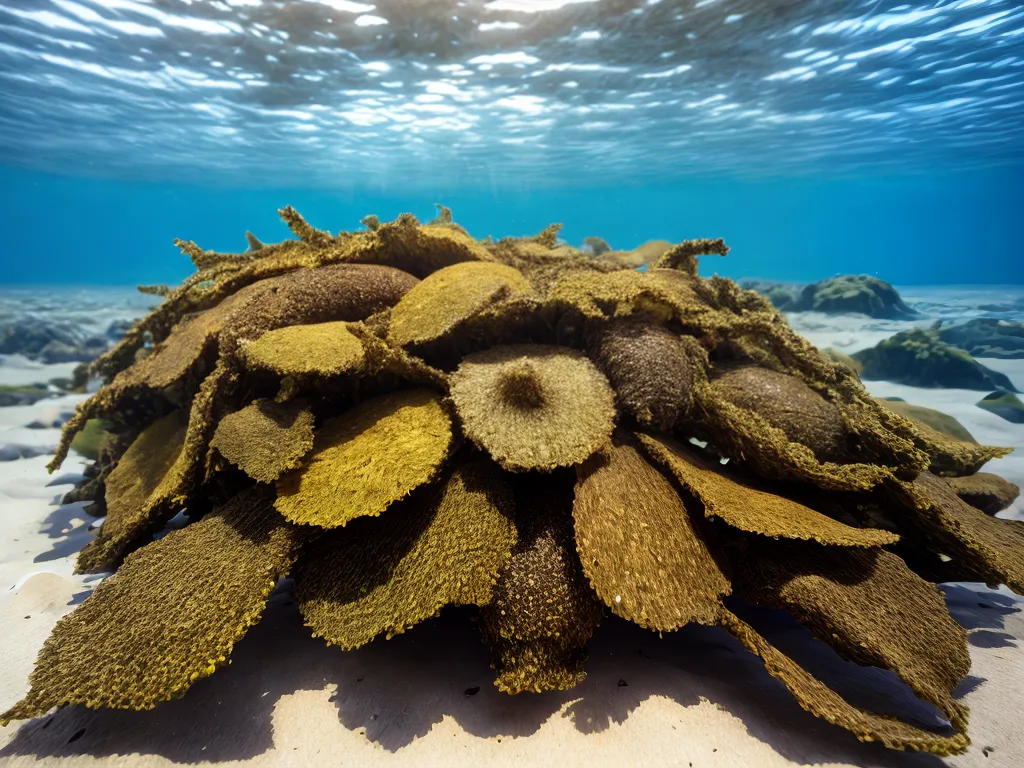
Introduction to Seaweed Energy
Seaweed, also known as marine macroalgae, has emerged as a promising feedstock for renewable bioenergy production. With rapid growth rates, high carbohydrate content, and no requirement for agricultural land or freshwater, seaweed can provide a sustainable source of biomass for energy applications.
In this comprehensive guide, we will examine the key aspects of harnessing energy from seaweed:
Seaweed Varieties Used for Energy
Several types of seaweed have potential for bioenergy production:
Kelp
- Kelp refers to large brown algae such as giant kelp and bull kelp that grow in cool, nutrient-rich waters.
- Key genera used for energy include Laminaria, Macrocystis, Nereocystis, and Alaria.
- High growth rates (up to 2 feet per day) make kelp an attractive biomass feedstock.
Macroalgae
- Macroalgae like Gracilaria, Kappaphycus, and Eucheuma are cultivated on a large scale, mainly for food hydrocolloids.
- These seaweeds have moderate lipid and carbohydrate content suitable for biofuels production.
Sargassum
- Sargassum is a genus of brown seaweed that grows abundantly in tropical and subtropical oceans.
- It has natural high sugar content, making it a candidate for fermentation to produce bioethanol.
Key Nutrients in Seaweed for Energy
Seaweeds contain carbohydrates, proteins, and lipids that can be converted into various energy products:
Carbohydrates
- Seaweeds contain polysaccharides like laminarin, mannitol, alginate, and carrageenan.
- These can be broken down into fermentable sugars like glucose and galactose.
- The sugars are then fermented into bioethanol or biobutanol.
Lipids
- Macroalgae contain moderate amounts of lipids, making them suitable for biodiesel production.
- The lipid content ranges from 1-5% of dry weight, with higher amounts seen in brown algae.
Proteins
- Proteins from seaweeds can produce energy via anaerobic digestion.
- This process breaks down proteins into methane-rich biogas.
Methods to Extract and Process Seaweed Biomass
There are several ways to obtain and process seaweed biomass for energy applications:
Wild Harvesting
- Existing seaweed populations are manually or mechanically harvested.
- Provides large volumes quickly but can damage ecosystems if not regulated.
Seaweed Cultivation
- Macroalgae farming in oceans, lakes, or tanks provides a controlled, sustainable supply.
- Kappaphycus and Eucheuma farming is already widespread for food production.
Drying and Milling
- Fresh seaweed has high moisture content, requiring drying to 10-15% moisture.
- Dried seaweed is then milled into a fine powder to increase surface area.
Extraction and Hydrolysis
- Carbohydrates are extracted using hot water or solvents.
- Polysaccharides are then hydrolyzed into fermentable monomers.
Anaerobic Digestion
- Entire seaweed biomass is fermented to produce biogas.
- Microbes break down carbohydrates, proteins, and lipids in absence of oxygen.
Direct Combustion
- Dried seaweed can be burnt to generate heat and electricity.
- This route has low efficiency but simple processing requirements.
Challenges With Seaweed as an Energy Feedstock
Despite its promise, some key challenges exist with using seaweed for bioenergy:
- Seasonal and regional variations in seaweed productivity and composition.
- High costs for offshore cultivation infrastructure and transportation.
- Pre-processing steps like drying and milling require significant energy inputs.
- Fermentation inhibitors in seaweed biomass can affect conversion yields.
- Environmental concerns about large-scale seaweed harvesting.
The Future of Seaweed Energy
The unique advantages of seaweed bioenergy make it a promising piece of the renewable energy puzzle moving forward:
- Continued research to increase yields, optimize pre-processing, and improve conversion processes.
- Development of integrated biorefineries to get value-added co-products.
- Collaboration with existing food-use seaweed industry.
- Sustainable cultivation practices to avoid ecosystem damage.
If innovation continues, seaweed could emerge as a major source of renewable fuels, energy, and biomaterials in the years to come.